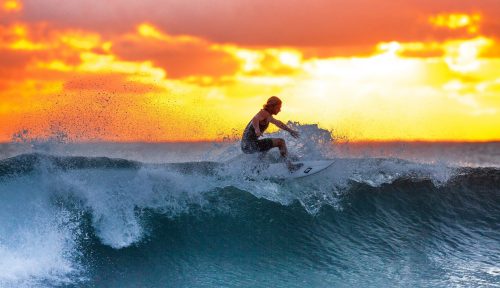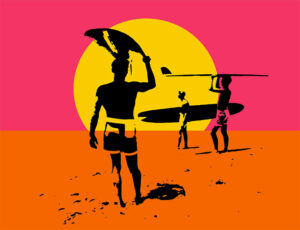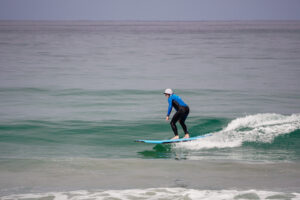Beginners are often overwhelmed when they realize how much knowledge and skill goes into surfing. There’s a lot to learn, and it’s more than just maneuvering and technique. There’s a vast culture surrounding the sport, an etiquette, and a general way of life, most of which has to be understood before surfers can go out onto the water.
Some of what beginners need to know is objective, and some of it is based on instinct developed after years of practice and experience. It takes time, patience, and discipline, and even then, safe surfing might not always be possible. But that’s the sacrifice surfers make, and for many it’s well worth it. The rush that comes from riding the perfect wave is unmatched. There’s nothing else in the world that can give you that feeling.
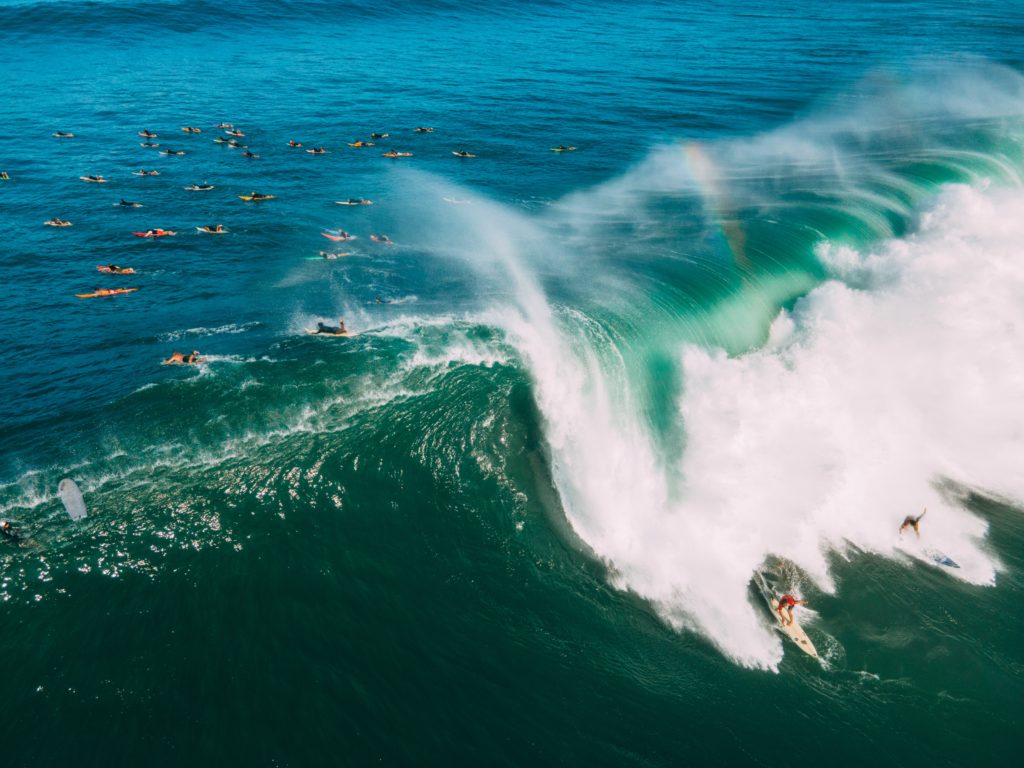
Finding the Right Beach
Without the right beach, surfing is impossible. It’s not just about the waves, though. It’s about the geology, the temperature of the water, the weather, and even the social dynamics. These factors will all determine whether or not it is safe or possible to go out on the water.
Check the Surf Report
The weather, season, and even the moon cycles can all have a serious effect on the size and shape of the waves. Before you choose which beach to surf at, check the surf report. There are plenty of websites that will tell you how high the waves are, the direction of the wind and tide cycles. Some even have cameras that will show you exactly what the surf looks like at any given moment.
Know the Social Dynamics
San Diego isn’t known for being the safest place in the world. There are a ton of shady areas, and some of them have beaches. Know what you’re getting yourself into before you step out onto the sand. Also know that locals tend to have a sense of ownership over their beaches. They live on the sand. It’s where they grew up, and they don’t want a ton of newcomers taking their chance to ride the waves.
There are beaches that are unofficially designated as belonging to locals only. They may have signs, usually graffiti or a makeshift post, telling outsiders to beware. Some beaches simply have a reputation for having a bad crowd. Locals may slash your tires, break your boards, rob you, or hurt you. If you feel unwelcome, or something seems off, it’s better to leave than to place yourself in danger.
Know the Lay of the Land
We often think about waves as products of chance, somewhat dependent upon the moon, but mostly up to the whims of mother nature. That’s not the case at all. Every beach has unique underwater geology, reefs, kelp beds, and land formations, giving them a specific type of wave. Some beaches—like Black’s Beach—are known for having higher waves than others. Learn what each break is like before you go and try to find an area known to have smaller waves that are safe for beginners. There are beginner’s beaches. They might be a little more crowded and filled with swimmers, but they’re perfect for people who are just starting out.
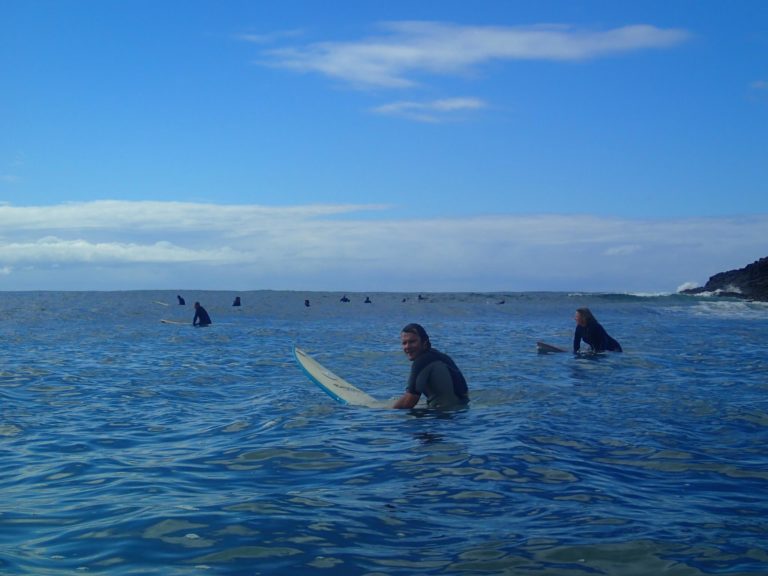
Monday Morning Lineup Yun Huang Yong / Flickr
Know the Rules
Surf culture is about more than just catching a wave and hanging out on the beach, and it’s anything but laid back. People get into fights on the beach every day. There’s surfers yelling at one another, attacking each other, enforcing turf wars and petty vendettas. Not all of it is avoidable, which is why it’s so important to find the right beach, but etiquette can go a long way.
Beaches can get crowded fast, so surfers use a specific set of rules, similar to traffic rules, to determine whose turn it is in a lineup. This is called wave priority. It’s pretty simple. Whoever is closest to the wave break and has been waiting the longest, takes the wave. If they don’t take it, then it’s whoever is closest to the wave’s peak. If that’s unclear, the wave belongs to the person who gets to their feet first.
That doesn’t mean you can paddle out and get the perfect position. This is called snaking, and it’s just like cutting in line. If you’re on the wrong beach, it’s bound to get you into a fight. Instead, wait for your turn in a lineup. Never rush a wave. Never try to get ahead of another surfer, and never cut them off when they’re already riding a wave. That’s called dropping in, and it’s a huge faux pas.
Practice Your Pop-Up/Take-off
That moment when a surfer rises to his feet is essential, and it’s one of the most difficult things to get right—aside from balance, of course. Pulling yourself up takes quite a bit of upper body strength and perfect form. Surfers like to practice their pop-up as often as they can, so that when the time comes for them to catch a wave, they can stand up seamlessly and focus on maneuvering. Practice on dry land first. Do so regularly and keep it up. Even experts practice their pop-up/take-off.
Start Small
Beginners need to remember one thing more than anything else. Be patient. If you work hard and you practice, eventually you will be able to ride those legendary waves that so many of us have seen. But know that those waves are dangerous. They could keep you underwater for long periods of time, drown you, pull you out to see, drag you along a coral reef, or bash you into an underwater rock formation. Some of San Diego’s biggest waves belong to its most dangerous beaches.
When you first start out, don’t be shy. Walk your board into the water and start riding the foam. It’s actually kind of fun. Practice your balance, your pop-up/take-off, and learn to keep your board straight.
Know that many of the people out on the water were born with boards in hand. It takes years of hard work, practice, and trial and error to learn how to do what they do. Also know that learning to surf can’t be done alone. It’s something that has to be taught. Find a good instructor who can help you understand the basics.

